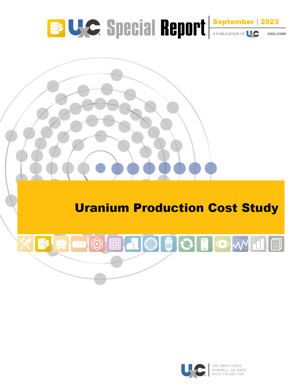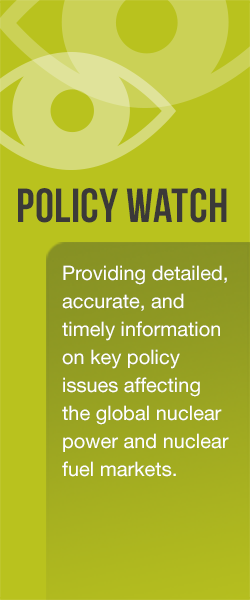Given the global shift toward cleaner energy production, reduced carbon emissions, and reliable long-term energy sources, uranium supply is becoming more important to utilities worldwide. Between 2025 and 2045, UxC's Base Case demand rises by 58%, which is a period wherein new primary production will be needed.
Although secondary supplies in all forms are expected to account for 27 million pounds U3O8e in 2025, or 14% of total supply, this share is expected to decline further, falling to 17 million pounds U3O8e in 2030, or 8% of total world supply, and leveling out near 15 million pounds U3O8e per year in 2040-2045. Much of this secondary supply stems from utility and government inventories, which have been drawn down at an accelerated rate.
UxC projects supply and demand to be balanced from 2026 through 2030, but then foresees a dire need for new uranium projects to enter service between 2031 and 2045, which will require incentive pricing as many existing uranium mines are depleted while base case demand strengthens.
As a result of minimal exploration from 2014 to 2020, the current menu of worldwide uranium projects is less comprehensive given that recent exploration has focused on known brownfield sites discovered 20, 30, or even 40 years ago. As the nuclear industry is an important component of the growing clean energy paradigm, one of the challenges for the supply side will be to produce uranium in a socially responsible manner that mitigates detrimental impacts to the surrounding environment.
This detailed cost study complements UxC's Uranium Market Outlook (UMO) and Uranium Supplier's Annual (USA) in identifying where expanded and new uranium supply will come from among 111 global projects to meet nuclear fuel demand through 2045.

UxC's Uranium Production Cost Study addresses a wide range of production cost issues including the following:
- Factors Affecting Production Costs - Extensive review of factors impacting productions costs, such as ore grade, reserve tonnage, deposit depth, spatial density, ore thickness, deposit composition and chemical agents, various technical factors, water flows and drainage, energy costs, labor costs, transportation/hauling costs, etc.
- Uranium Mining/Milling Costs - Overview of mining/milling costs for conventional and ISR deposits, focusing on operating and capital costs for each mining method. The breakdown of typical operating costs for both acid leach and alkaline leach processing circuits are also presented.
- World Production Costs - Cost curves for operational, planned/advanced, and potential projects are developed to identify those projects likely to produce in the future, as well as projected production cost curves for 2025, 2030, 2035, 2040, and 2045. In addition, the UPCS includes cost curves for the above-mentioned years that account for full production costs plus a projected rate of return (ROR). The UPCS also includes a competitive cost comparison of 2024 production by average full cost for major producing regions.
Ordering Information
- UxC's 2025 Uranium Production Cost Study is available immediately at a rate of US$6,000.00.
- Subscribers of either UxC's UMO or USA reports receive a discounted rate of US$4,500.00.
- Subscribers of both UxC's UMO and USA reports receive a further discounted rate of US$3,500.00.
- For more information on the Uranium Production Cost Study, please contact Nick Carter at +1 (470) 689-0605.
Please see our product flier and table of contents in Adobe Acrobat PDF format.
To order, please see our online order form.
